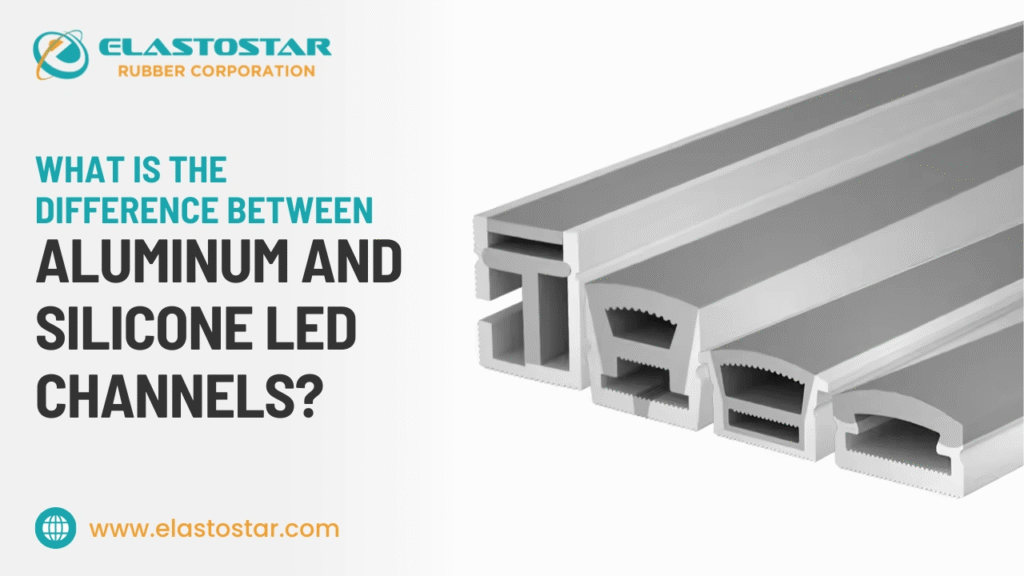What Is the Difference Between Aluminum and Silicone LED Channels?

LED channels are widely used to enhance lighting installations, and choosing between aluminum and Silicone LED channels can affect the performance, flexibility, and durability of your project. Both materials serve different needs based on their properties and intended application.
Key Properties of Aluminum LED Channels
Aluminum LED channels are known for their rigid structure and sleek appearance.
Here’s what you should know about them:
- Heat Dissipation: Aluminum offers superior heat management, which helps prolong the life of LED strips.
- Durability: These channels are strong and impact-resistant, making them ideal for areas where the lights may be exposed to mechanical stress.
- Clean Finish: With a smooth and polished look, aluminum channels are popular in commercial or architectural lighting for a more modern finish.
- Mounting Options: They come in various profiles and can be mounted on walls, ceilings, or furniture with ease.
Benefits of Silicone LED Channels
Silicone LED channels provide unmatched flexibility and are a smart choice for dynamic lighting designs.
Here’s how they stand out:
- Flexibility: Silicone is bendable, making it suitable for curved or uneven surfaces where rigid channels can’t fit.
- UV and Weather Resistance: These channels hold up well against UV rays and extreme outdoor conditions, making them great for both indoor and exterior lighting.
- Seamless Appearance: The diffused finish provides a clean, soft glow without visible hotspots.
- Lightweight and Easy to Cut: Silicone channels are easy to trim and install without the need for heavy tools.
Application Differences Between the Two
Choosing the right type depends on how and where you plan to use your lighting setup.
Each channel material fits specific installation needs:
- Aluminum channels are better for high-heat or static applications like under-cabinet lights, retail display lighting, or industrial setups.
- Silicone channels work best for flexible installations, signage, outdoor architectural features, and creative designs that require bending or wrapping.
Durability and Maintenance
When it comes to maintenance and lifespan, both materials hold up differently over time.
Here are the key points:
- Aluminum LED channels need minimal upkeep and are resistant to corrosion when anodized or powder-coated.
- Silicone LED channels are waterproof and dustproof, which helps maintain performance in outdoor and wet environments.
Aesthetic and Functional Preferences
Your final choice may also depend on the visual finish and the lighting effect you want to achieve.
Here’s a quick breakdown:
- Choose aluminum channels for a sharp, linear aesthetic in modern designs.
- Opt for silicone channels for soft, continuous lighting without visible fixtures or sharp edges.
Conclusion
Both aluminum and silicone LED channels offer distinct benefits based on their material properties and design flexibility. Aluminum LED channels are perfect for rigid, professional setups with strong heat dissipation, while silicone LED channels are ideal for custom, weatherproof, and bendable applications.
Understanding your project’s environment and lighting goals will help you make the most effective choice.Ready to choose the right LED channel for your project? Explore premium-quality aluminum and silicone LED channels from Elastostar Rubber Corporation—designed to meet your lighting needs with flexibility, performance, and durability. Visit elastostar.com to learn more or request a quote today!
